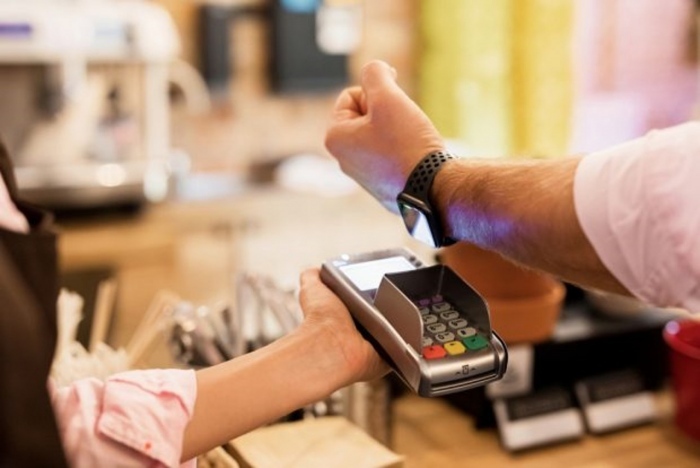Digital Payment Barometer 2021
15 May 2021 - 8 min Reading time
Febelfin and partners - Bancontact Payconiq Company, Mastercard, Visa and Worldline - are launching the annual Digital Payment Barometer in collaboration with the VUB. After one year of crisis, the figures show some striking trends.
- Contactless payment by card is making a definitive breakthrough among all age groups. The corona crisis was clearly a trigger to try this out.
- Contrary to what most people suspect, contactless payment by card is not typical for the younger generations: of all people who have made contactless payments at least once, the higher age groups actually indicate that they are more familiar with it than the group of young people.
- Meanwhile, 7 out of 10 Belgians (69%) have made contactless card payments at least once in a physical store, compared to 49% last year, before the start of the crisis.
- The number of Belgians who have paid mobile at least once in a physical store is also increasing: 35% in 2021 compared to 30% in 2020.
- However, for the time being only 4 out of 10 Belgians (of all ages) say they are well acquainted with paying via smartphone in a physical store. In the meantime, this is already 7 out of 10 for contactless card payments.
- The gap between the popularity of digital payments and cash payments has widened, with only 13% saying cash is their preferred method of payment.
- The declining use of cash continues at all ages.

Digital Payment Barometer: How popular is digital payment?
Digital payments have been on the rise for years and the current pandemic has further reinforced this. More and more people are leaving banknotes and coins for what they are and take out the bank card or smartphone. This is evident from recent research by partners Bancontact Payconiq Company, Febelfin, Mastercard, Visa, and Worldline in collaboration with the VUB: after one corona year has passed, only 13% of all Belgians still prefer to pay cash and 70% have already paid at least once contactless.
The 'Vrije Universiteit Brussel' conducted research into the trends in payment traffic and entered the results in the Digital Payment Barometer. During the months of March of this year and last year, a representative sample of 1,176 and 1,181 Belgians respectively was questioned online and by telephone about their payment habits and preferences. The results make it possible to determine the influence of the corona crisis on the payment behavior of Belgians and to map the evolution of digital payments.
Dit onderzoek werd uitgevoerd binnen de vakgroep Toegepaste Economie (Department of Applied Economics) door Prof. dr. Leo Van Hove, hoogleraar Monetaire Economie, en Dr. Ellen Van Droogenbroeck, postdoctoraal onderzoeker en gastprofessor.
The rise of contactless payment by card
A first important conclusion of the research is the definitive breakthrough of contactless payment by card – and this in all age categories. While in 2019 1 in 3 paid contactless at least once, in 2020 this had risen to almost half (47%) and after 1 year of the corona crisis, 7 in 10 Belgians had become acquainted with contactless card payments. A striking increase of no less than 50% since the start of the pandemic. The corona crisis was clearly a trigger to try out contactless payments.
Surprisingly, the biggest jumps occur in the higher age categories. The outlier is the group of 65 to 74 year olds. 76% of them have made contactless payments at least once, compared to only 36% last year. And of all people who have paid contactless at least once, the higher age categories actually indicate that they are more familiar with it than the group of young people (16-24 years). Contrary to what most suspect, contactless payment is therefore not typical for the younger generations.
The number of mobile payments is rising slightly
Paying with a smartphone in a physical store is also in a positive flow, albeit slightly less pronounced. More Belgians have paid mobile in a physical store at least once than before the corona crisis: 35% in 2021 compared to 30% last year, before the start of the crisis. The relationship with age is the opposite of what we found for contactless card payments. Mobile payment in physical stores is therefore primarily popular with the lower age groups; the over-55s are less familiar with it.
The most striking increase is among 16 to 24-year-olds: mobile payments have become the preferred means of payment for a quarter of them in the past year. Before that it was only 9%. The average of all age groups was 8% and rose to 14% a corona year later.
For the time being, across all ages, only 4 out of 10 Belgians say they are well acquainted with paying via smartphone in a physical store. This is 7 out of 10 for contactless card payments. However, one third of non-mobile payers are considering it in the future. Previously, that number was only a quarter.
Less cash
Cash is the preferred means of payment for fewer and fewer people. This is also reflected in the figures and is fully in line with expectations. The decline in the popularity of cash continues at all ages (from 16% to 13%), but is most notable among the youngest and oldest participants in the survey. Striking: the age group that likes cash the least (9%) is the group of 65 to 74 year olds.
The trend is also literally noticeable in our portfolio: 6% of Belgians never carry cash and 42% can put a maximum of 20 euros in cash on the table. On average, Belgians had EUR 55.60 in cash in their portfolio in 2021, compared to EUR 61.20 before the corona crisis. Unsurprisingly, the number of cash payments has fallen sharply: an impressive drop of no less than 39% in one year.
Shift in preferences
Overall, we can see that since the start of the crisis, Belgians who like to pay with a payment card prefer to do so contactless. In the youngest and oldest categories, where there is still a considerable appetite for cash payments in relative terms, there is also a shift from cash to card payments via the terminal. Paying with a smartphone, on the other hand, is particularly popular among young people.
The contactless card is now the preferred means of payment for 36% of Belgians (compared to 16% last year); 37% still prefer to put the card in the terminal (compared to 60% in 2020). Only 13% still swear by cash.
Conclusion - the impact of corona
The fact that more and more Belgians prefer digital payments is a trend of recent years, which has gained momentum since the outbreak of the corona crisis. Nevertheless, the Digital Payment Barometer shows some striking results: for example, cash is the least popular among 65 to 74-year-olds and this may be related to hygienic motives. The most vulnerable active group has already clearly started to avoid cash. But the most important finding remains the success of contactless payment by card among all ages. While paying with a smartphone in a physical store is especially popular with the 16 to 24-year-old category, this is by no means the case with contactless payment with the card.
In addition, we have seen that the gap between the popularity of digital payments and cash payments has widened: 87% opt for digital payments. This should come as no surprise, because everyone knows the advantages by now: it is fast, safe, user-friendly and hygienic. The latter characteristic in particular may be the explanatory factor for the most remarkable results of this study. In short, the crisis is the crack with the bump: it is the umpteenth push towards a society where digital solutions make life simpler and safer. The Digital Payment Barometer is part of Digital Payment Day, an initiative of umbrella organization Febelfin, in collaboration with partners from the payment sector: Bancontact Payconiq Company, Mastercard, Visa and Worldline. Every year on that day, we publish the results of scientific research on digital payments and we promote digital payments.
